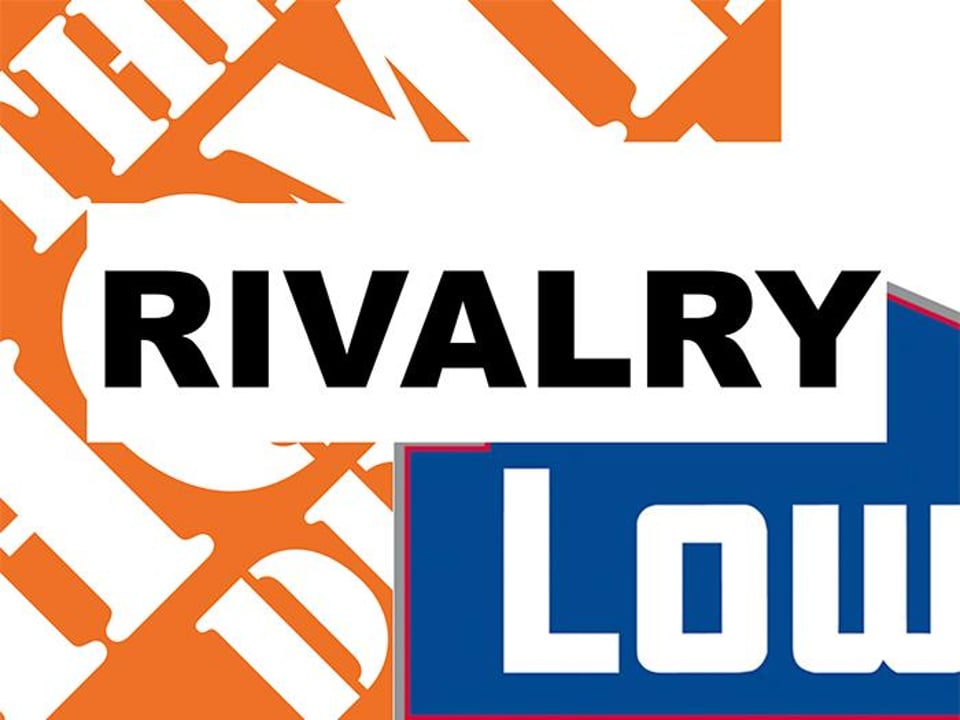HD & LOW, A Q1 tale of the tape
Separated by 24 hours, the Home Depot and Lowe’s earnings calls shared notebooks full of numbers and insights related to operations over three months that included a late-arriving spring and an extremely difficult comparison to the year ago performance.
Among the many differences in the two reports, there were also striking similarities. Chief among them were confidence in the underlying strengths of home improvement market in general, and strong growth among pro customers.
While The Home Depot outperformed Lowe’s on a comp-store comparison (see chart), Lowe’s executives described their business – with 75% reliance on DIY – more susceptible than its orange rival to cold temperatures that hurt seasonal business. And Lowe’s executives expect to make up for those lost sales in May (already showing strength), June and July.
The spring season arrived particularly late in northern markets, dampening Lowe’s sales of DIY sweet spots such as live goods, outdoor power equipment, grills and patio furniture.
“Simply stated, the further north you look, the larger the negative impact to our seasonal categories,” said Lowe’s CEO Marvin Ellison.
At Lowe’s, executive vice president of Merchandising Bill Boltz reported that 10 of 15 categories were above the company average, while 8 categories showed 20 percent gains on a 2-year basis.
Categories of growth
Paint and flooring brought the highest comps for the quarter. Within the paint category, interior and exterior paint and primers were the biggest growth drivers he said.
Store count
Lowe’s finished the quarter with 1,971 stores, the same number as reported three months ago.
Home Depot’s store count declined by one from 2,317 to 2,316. The company lost a store to fire in San Jose. No one was injured.
Luxury vinyl was the top sales contributor for Lowe's in the flooring business.
The biggest bright spot for Lowe’s was the pro business. Boltz pointed to “broad-based strength in electrical, building materials, rough plumbing, millwork and lumber, driven by strong Pro demand and competitive in-stock positions.”
Home price appreciation is creating demand across the business, says Ellison. “As we talk to our pro customers, they’re booked up for the year,” Ellison said. “As we talk to our DIY customers, they're just waiting for the sun to come out.”
For The Home Depot, Jeff Kinnaird, executive vice president of merchandising, said 11 of 14 merchandising departments posted positive comps, led by plumbing, building materials, millwork and paint.
The late arrival of spring certainly affected Home Depot, too. Double-digit negative comps were reported in seasonal departments.
Appliances also posted slightly negative comps, he said.
Meanwhile, both companies pointed to gains in their digital business:
• Lowes.com sales increased 2 percent on top of over 36 percent gains in the first quarter of 2021. Those increases mark a 2-year comp of more than 39 percent and nearly 10 percent sales penetration, Lowe's said.
• At Home Depot, sales leveraging our digital platforms increased 3.7% during the first quarter. The quarter marked the highest sales dollar volume in the history of the company. Also, more than half of online orders were fulfilled through the stores. (“A testament to the power of our interconnected retail strategy,” said Jeff Kinnaird, executive vice president of merchandising.)
Looking ahead
Perhaps the biggest similarity between Lowe's and Home Depot in the first quarter is the tone of their optimism:
"The home improvement consumer remains engaged," said Home Depot CEO Ted Decker, in his first quarterly earnings call without the retired Craig Menear. "Customers continue to tell us that their homes have never been more important and project backlogs are very healthy. We believe that the medium to longer term underpinnings of demand for home improvement have never been stronger."
At Lowe's the message was similar:
“Despite some increased uncertainty in the macro environment, our long-term outlook for the home improvement industry remains positive,” said Ellison. “Homeowner balance sheets are very strong, and their confidence to purchase big-ticket items is supported by continuing home price appreciation. Other factors like the extension of remote work, the age of the housing stock, millennial household formation and baby boomers preference to age in place, all are long-term tailwinds for home improvement.”





